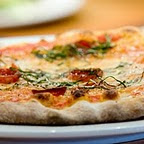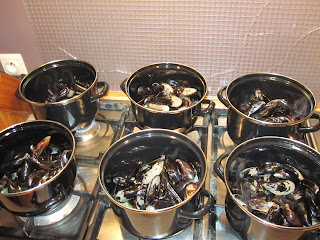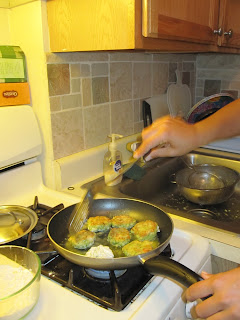I’m no stranger to small-town rural life. I’ve spent many hours stopped on the road while the neighbors move their cows to a pasture across the street and I know spring has arrived when the smell of manure is in the air. In order to pass eighth grade I had to learn how to drive a tractor in my required agriculture class (what, you didn’t?). I’ve probably heard every small town or redneck joke there is.
But this doesn’t even compare to my friend Bill who hails from Jackson Junction, Iowa
How many people can say that they’ve had a meal where they are personally responsible for growing, cultivating and slaughtering everything on their plate? Not many. But if you grew up on a farm in the-middle-of-nowhere, Iowa
5:00am - Get out of bed, do morning chores: feed animals, let the chickens out, clean
7:00am - Eat breakfast, get ready for school
8:00am-3:00pm - School
3:00-5:00pm - Football practice
5:00-6:00pm - Music practice
6:00pm – Dinner
7:00-9:00pm - Evening chores: feed animals, collect eggs, clean eggs, coop up chickens
9:00-11:00pm - Homework
And during his childhood summers, while most of us were taking swim lessons, singing around campfires, and selling lemonade by the side of the road, Bill was working 12-16 hour days on the family farm, bailing hay in the summer heat and “picking rock” (picking limestone from the fields so it didn’t damage the farm equipment).
It’s hard for most of us to imagine getting up at 5:00am every morning to do chores (especially in the Iowa
Working on the farm gave Bill a deep appreciation for the land he cultivated, the animals he raised, and for the fresh food that was grown or butchered with his own hands. “Food just tastes better, and is more satisfying” says Bill, “when you know exactly where it came from and how much work went into it.” He also learned the importance of earning a living by selling the family’s produce at local markets.
His family’s farm is mostly self-sufficient. They plant their own vegetables, butcher their own cows, pigs and rabbits, hunt their own deer and pheasant and fish bluegill bass and catfish from their pond. Growing up, Bill was used to homemade ice cream made from fresh farm cream, pumpkin bread made with the pumpkins grown in his back yard, or ground beef burgers made from a recently-butchered cow (with homemade ketchup made from fresh garden tomatoes). He misses the convenience and the satisfaction of having his food available in his own back yard. “There’s a uniqueness to being able to walk into a chicken coop and gather a couple of eggs to make yourself an omelette,” he says. “You can’t do that in the city.”
 |
| Bill's Family Farm |
It’s true. It is tough to do that in the city, but there is a large movement in the DC/MD/VA area and across the country to get back to our farming roots in order to promote self-sustainability and enjoy better quality food that you can have a hand in producing.
Organizations like DC Urban Gardeners, Field to Fork Network and Neighborhood Farm Initiative are educating DC residents on how to start their own gardens, grow their own food and eat seasonal nutritious meals. DC Farm to School Network is an organization that forms partnerships between local farms and DC schools to help kids learn about where their food comes from and give them healthier food options at school.
For those who want to work in a community garden, City Farm DC is a non-profit urban gardening collective that will link you to community gardens in your area. They also offer growing and gardening workshops for beginners and “plot-luck” dinners and picnics where you can socialize with other area gardeners. Sharing Backyards DC is a similar organization that links you with neighbors who are willing to share gardening space in their own yards.
If you aren’t able/don’t have the time to participate in a garden share, there are still plenty of ways to access fresh meats and produce from the farm. Fresh Farm Markets are sprouting up all over Washington , DC Chesapeake Bay region.
If you’re just looking for a way to eat a farm fresh meal you can visit area farms that have their own restaurants right on the property. Potowmack Farm in Lovettsville , VA Jerusalem
 |
| Quail with Herb Waffles from the Potowmack Farm Restaurant |
And if you can’t get directly to the farm for a meal, you can still support farms by dining at restaurants that partner with them. DC Restaurants like Equinox, Founding Farmers, and Farmers and Fishers all serve seasonal foods from local family farms and fisheries. Partnering with local farms is a smart move for these restaurants. Not only do they strive to support sustainable agriculture, but they know that this will guarantee the freshest and most delicious ingredients!
 |
| Crab Cakes from Equinox |
 |
| Butternut Squash Ravioli from Founding Farmers |
 |
| Pepperoni Pizza from Farmers and Fishers |






















